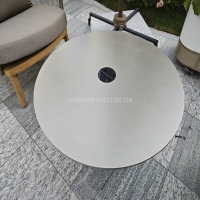Welcome to the website for landscape facilities products and knowledge.
How does the manufacturer handle customer feedback or complaints about the product?
In today's competitive manufacturing landscape, customer feedback serves as a crucial compass guiding product development and quality enhancement. Progressive manufacturers have developed sophisticated systems to capture, analyze, and act upon customer insights, transforming potential complaints into valuable opportunities for improvement.
The feedback management journey typically begins with multiple accessible channels where customers can voice their concerns. These include dedicated email support, toll-free hotlines, social media monitoring, and comprehensive online portals. Many manufacturers now employ AI-powered sentiment analysis tools to categorize and prioritize incoming feedback based on urgency and potential impact.
When a complaint arrives, it triggers an immediate acknowledgment protocol. Within 24 hours, customers receive confirmation that their concern has been registered and assigned to a specialized team. This initial response includes a unique tracking number and clear timeline for resolution, setting proper expectations from the outset.
The investigation phase involves cross-functional collaboration between customer service representatives, quality assurance specialists, and product engineers. They examine the reported issue against manufacturing specifications, batch records, and previous similar cases. Advanced manufacturers utilize digital twin technology to simulate the reported problem and identify root causes without physical product examination.
Resolution strategies vary based on the complaint's nature. For minor issues, manufacturers might offer troubleshooting guidance, replacement parts, or software updates. More significant concerns could warrant product replacements, refunds, or service visits from certified technicians. What distinguishes exceptional manufacturers is their commitment to going beyond immediate fixes - they document each case in a centralized knowledge base that informs future design iterations and manufacturing processes.
The most forward-thinking manufacturers close the feedback loop by informing customers about how their input contributed to product improvements. Some even invite loyal customers who reported issues to participate in beta testing of enhanced versions, creating brand advocates from previously dissatisfied clients.
Continuous improvement mechanisms ensure that recurring patterns in feedback trigger formal corrective and preventive actions. Manufacturing processes are regularly audited and updated based on customer insights, creating a virtuous cycle where today's complaints become tomorrow's quality benchmarks. This customer-centric approach not only resolves immediate concerns but also drives innovation and strengthens brand reputation in the long term.
Through these comprehensive feedback handling systems, manufacturers demonstrate their commitment to customer satisfaction while simultaneously leveraging critical insights to refine their products and processes. This dual benefit makes customer feedback management not just a damage control exercise, but a strategic advantage in today's quality-conscious marketplace.
Related search:

Recommendation
Outdoor stainless steel table with solar-powered ambient lighting feature - excellent design.